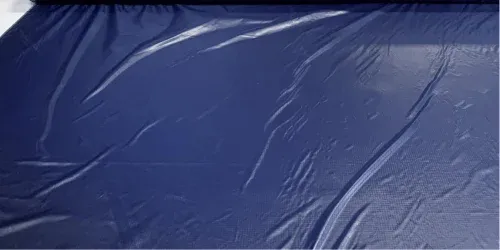When planning an outdoor adventure, one of the most critical questions that arise is whether your shelter can stand against the elements. For campers and hikers, the quest for a truly waterproof tent is akin to finding a needle in a haystack. But is it really possible to find a tent that can keep you dry in the midst of a downpour? Let's delve into the world of tents and their ability to fend off water.
Key Takeaways:
- Understanding the waterproof ratings of tents and how they apply to different types of tents.
- The importance of tent maintenance and proper setup to ensure maximum water resistance.
- The role of tent materials and design in determining waterproof capabilities.

The Quest for a Dry Night's Sleep
When you're out in the wilderness, the last thing you want is to wake up in a puddle. The term "waterproof" can be somewhat misleading when it comes to tents. No tent is impervious to water indefinitely; it's all about how long and how well a tent can resist water penetration. Manufacturers often use a hydrostatic head rating to indicate how much water pressure a tent fabric can withstand before leaking. The higher the number, the more water-resistant the tent is supposed to be.
Understanding Hydrostatic Head Ratings
Hydrostatic head (HH) ratings are a measure of a tent's waterproof capabilities. For a tent to be considered waterproof, it should have a minimum HH rating of 1,000mm, but for heavy rain, a rating of 3,000mm or higher is recommended. Dome tents and cabin tents often come with these ratings, giving you a benchmark for their water resistance. However, it's important to note that these ratings do not account for factors like wind-driven rain or water pooling.

Material Matters
When it comes to tent materials, canvas tents are known for their durability and breathability, which can be a double-edged sword. While canvas can be treated to enhance its water resistance, it may not hold up as well as synthetic fabrics in a deluge. On the other hand, synthetic materials, such as nylon and polyester, are inherently more water-resistant and are often coated with waterproofing agents to improve their performance.
The Role of Tent Design
The design of a tent plays a crucial role in its ability to shed water. Dome tents, with their sloped walls, naturally allow water to run off, reducing the likelihood of leaks. Cabin tents, with their more vertical walls, may not fare as well in heavy rain, as water can pool on the roof if the tent is not properly tensioned. The design of the tent's rainfly also contributes to its waterproofness, as a well-designed rainfly will direct water away from the tent body.
Seasonal Considerations
When discussing waterproof tents, it's essential to consider the different types of tents designed for various seasons. Three-season tents are built to handle light to moderate weather conditions, including rain. They are typically equipped with a rainfly and mesh panels for ventilation. Four-season tents, on the other hand, are designed to withstand harsher conditions, including heavy snow and strong winds, and are constructed with more robust materials and less mesh.
The Importance of Tent Maintenance
Even the most waterproof tent can succumb to leaks if not properly maintained. Seam sealing, reapplying water repellent treatments, and ensuring that the tent fabric is clean and free of debris all contribute to maintaining a tent's waterproof integrity. Regular maintenance can significantly extend the life of your tent and its ability to keep you dry.

Proper Tent Setup: A Critical Factor
A tent's waterproofness can be compromised by improper setup. Ensuring that the tent is taut and the rainfly is correctly positioned can prevent water from pooling and seeping through the fabric. Additionally, setting up your tent on high ground and using a footprint can help avoid groundwater seeping up from below.
When the Storm Hits: Real-World Performance
In practice, even tents with high waterproof ratings can face challenges in extreme weather conditions. Wind-driven rain can find its way through minute openings, and prolonged exposure to water can lead to fabric saturation. It's important to have realistic expectations and to prepare for the possibility of getting wet despite your best efforts.

Summary
While no tent can claim to be entirely waterproof forever, many come close, offering significant resistance to water penetration. Understanding the materials, design, and proper maintenance of your tent can greatly enhance its ability to keep you dry. Remember to consider the tent's hydrostatic head rating, the importance of regular maintenance, and the necessity of a proper setup to maximize your tent's waterproof capabilities.

FAQs
What is the best hydrostatic head rating for a waterproof tent?
For a tent to be considered waterproof, it should have a minimum hydrostatic head rating of 1,000mm. However, for better protection against heavy rain, look for a rating of 3,000mm or higher.
Can a canvas tent be waterproof?
Canvas tents can be treated to be water-resistant, but they may not be as waterproof as tents made from synthetic materials. Proper maintenance and treatment are key to enhancing a canvas tent's water resistance.
How often should I reapply waterproofing treatments to my tent?
It's recommended to reapply waterproofing treatments to your tent every season or after extensive use, especially if you notice that water no longer beads up on the fabric's surface. Regular maintenance is crucial to maintaining your tent's waterproof capabilities.
What type of tent does everyone else use?











